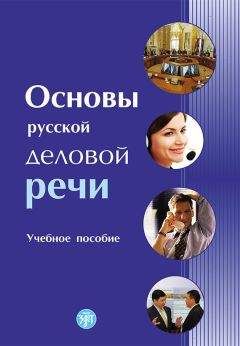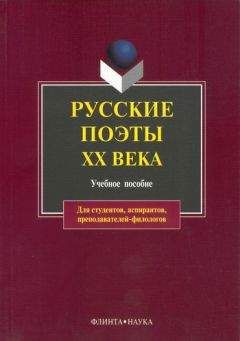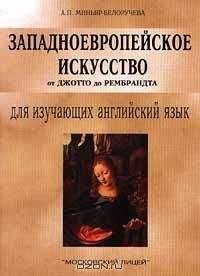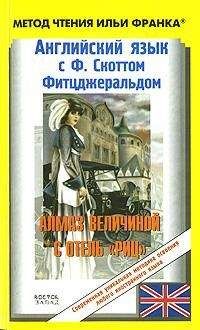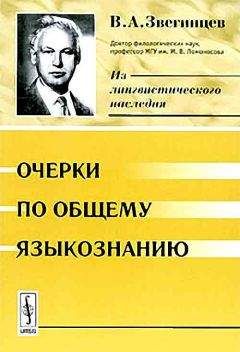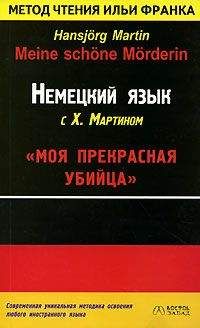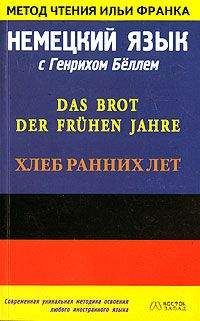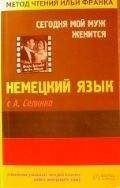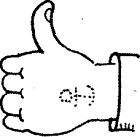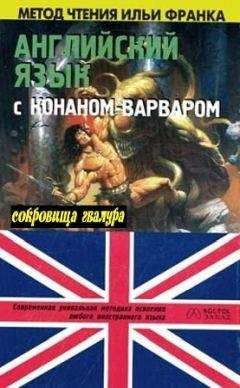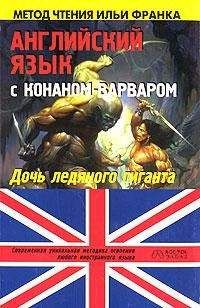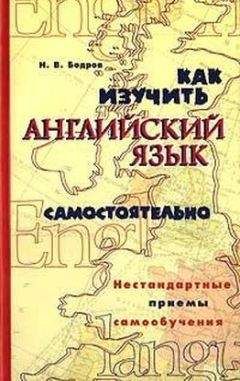Нина Пусенкова - Английский язык. Практический курс для решения бизнес-задач
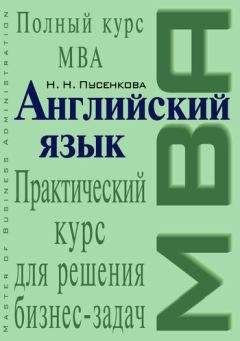
Все авторские права соблюдены. Напишите нам, если Вы не согласны.
Описание книги "Английский язык. Практический курс для решения бизнес-задач"
Описание и краткое содержание "Английский язык. Практический курс для решения бизнес-задач" читать бесплатно онлайн.
Задача данного издания – познакомить учащихся с современной финансово-экономической терминологией. Первая часть книги в большей мере посвящена вопросам управления, вторая – финансовой проблематике. Темы занятий в основном соответствуют тематике курсов, которые преподаются в большинстве школ бизнеса. Уроки содержат тексты из самых разнообразных профессиональных источников и упражнения, позволяющие студентам закрепить пройденный материал. В конце учебника приводится словарь необходимой лексики примерно из 1000 слов и выражений.
Для студентов бизнес-школ, языковых, финансовых и экономических вузов, а также для всех, кто хотел бы усовершенствовать свой деловой и финансовый английский.
19. goodwill n – добрая воля, деловая репутация; «гудвилл» (статья баланса)
20. complaint n – жалоба, иск; недовольство
complain v – жаловаться; подавать жалобу, иск
21. survey n – обозрение, осмотр, обзор, инспектирование
survey v – проводить осмотр, обзор, обозрение; инспектировать
22. bottom line – итоговая строка баланса или счета, финальная прибыль или убыток, окончательный результат, конечная цель
23. generate profit – генерировать прибыль
24. warranty n – гарантия (качества); поручительство, ручательство; условие
25. sales n. pl . – зд. стоимость продаж товаров компании за определенный период
26. cost n – затраты, издержки, расходы; цена, стоимость, себестоимость
27. Chief Executive Officer (CEO) – главный исполнительный директор
28. commitment n – обязательство; приверженность, преданность; совершение
commit (to) v – брать обязательства, совершать, поручать, вверять; подвергать
committed (to) a – преданный, приверженный
29. supervisor n – инспектор
supervision n – надзор, наблюдение, инспекция
supervise v – надзирать, наблюдать, инспектировать
30. assembly line – сборочная линия, конвейер
31. mission statement – декларация миссии компании
32. integrity n – целостность, полнота; порядочность
33. code n – код, кодекс, сборник правил
34. (in)tangible a – (не)материальный, (не)осязаемый
Exercise 1. Answer the following questions.
1. Does corporate culture influence the way organizations are managed? 2. Do efficiency and effectiveness of a company depend on corporate culture? 3. Does corporate culture affect the relations of a company with its stakeholders? 4. How would you define corporate culture? 5. Do slogans really give us a general idea of what the company stands for? 6. Who should create the internal environment in an organization? 7. What are the basic values of successful companies? 8. Is bottom line the only thing that really matters? 9. Are employees always rewarded for quality? 10. Why is it important for companies not to violate any laws and be ethical?
Exercise 2. The dictionary «Economics» gives the following definitions of the terms «effectiveness» and «efficiency»: «Effectiveness is the achievement of objectives. Efficiency is the achievement of the ends with the least amount of resources.» Make 4—6 sentences of your own using these words in order to emphasize the difference between them.
Examples: Sibneft was one of the most efficient oil companies in Russia demonstrating a rapid low-cost oil production growth.
Aeroflot has introduced an effective frequent flyer program.
Exercise 3*. According to the generally accepted definition, «Stakeholders are the people or institutions that are affected, or might be affected, by an organization’s activities. Likewise, stakeholders can, in return, affect the activities of that organization.»
The text identifies such stakeholders as customers, suppliers, creditors and competitors. What other stakeholders can you name?
Exercise 4. «Commitment» means «обязательство» and «приверженность, преданность чему-либо». Make 4—6 sentences of your own using the word «commitment» to emphasize its different meanings.
Examples: Gazprom has always met its gas export commitments to Western Europe.
Bosco di Ciliegi is known for its unwavering commitment to customer satisfaction.
Exercise 5. Study the Hofstede Cultural Orientation Model (1995) that classifies cultures based on where they fall on five continuums, and identify the culture of your company according to these categories:
1.Individual vs. Collective Orientation
The level at which behavior is appropriately regulated.
2.Power-Distance Orientation
The extent to which less powerful parties accept the existing distribution of power and the degree to which adherence to formal channels is maintained.
3.Uncertainty-Avoidance Orientation
The degree to which employees are threatened by uncertainty, and the relative importance to employees of rules, long-term employment and steady progression through well defined career ladders.
4.Dominant-Values Orientation
The nature of the dominant values – e.g., monetary focus, well-defined gender roles, formal structure – vs. concern for others, focus on quality of relationships and job satisfaction, and flexibility.
5.Short-Term vs. Long-Term Orientation
The time frame used: short-term (involving more inclination toward consumption) vs. long-term (involving preserving status-based relationships).
Exercise 6*. Fill in the blanks using terms given below.
Gore’s Corporate Culture.
How we work sets us apart. We encourage hands-on…………, involving those closest to a project in………… Teams organize around……… and leaders emerge.
Our……., Bill Gore created a flat lattice organization. There are no………. nor pre-determined…………. Instead, we communicate directly with each other and are………….. to follow members of our……………
How does all this happen?……… (not employees) are hired for general work areas. With the guidance of their………… (not bosses) and a growing understanding of opportunities and team…………., associates commit to projects that match their………. All of this takes place in an……….. that combines freedom with cooperation and autonomy with synergy.
Everyone can quickly earn the……….. to define and……..projects. Sponsors help associates chart a course in the organization that will offer personal fulfillment while maximizing their………. to the enterprise. Leaders may be………., but are defined by ‘follower ship’. More often, leaders……… naturally by demonstrating special knowledge, skill, or experience that advances a business objective.
Associates………. to four basic guiding principles articulated by Bill Gore:
……… to each other and everyone with whom we come in contact
Freedom to encourage, help, and allow other associates to grow in knowledge, skill, and………..
The ability to make one’s own………. and keep them
Consultation with other associates before undertaking actions that could impact the…….. of the company.
Source: www.gore.com
Terms:
commitments, sponsors, channels of communication, drive, credibility, decision making, environment, skills, image, appointed, opportunities, adhere, multi-disciplined teams, associates, objectives, contribution, fairness, scope of responsibility, founder, emerge, innovation, accountable, chains of command
Exercise 7. Translate into English.
Корпоративная культура ВМЗ.
Выксунский металлургический завод – динамично растущая, высокоэффективная, социально ориентированная компания, стремящаяся стать ведущей компанией в мире по производству труб и железнодорожных колес.
Наша продукция – это результат постоянных инноваций и приверженности качеству. Она соответствует самым высоким требованиям наших потребителей – ведущих энергетических, транспортных и промышленных компаний. Используя нашу продукцию, они могут качественно, с минимальными издержками, экологически чисто и безопасно транспортировать людей и материалы на любые расстояния. Без нашей продукции невозможно создание и эксплуатация глобальных и локальных энергетических и транспортных коммуникаций.
ВМЗ – финансово устойчивая компания, ориентируется на постоянную работу по повышению эффективности операционной деятельности и инвестиций. Стабильность позволяет ВМЗ строить отношения со своими клиентами и поставщиками на долгосрочной основе.
Мы развиваем и поощряем профессионализм и инициативу наших сотрудников и строим наш бизнес на передовых методах управления.
Наши ценности:
Интересы клиентов – наш приоритет
Опережать время – наше кредо
Высококачественная продукция – наш принцип
Надежные партнеры – наша опора
Повышение уровня жизни работников – наше правило
Содействие развитию регионов – наша позиция
Сплоченная команда профессионалов – наш капитал
Источник: www.vmz.ru
Lesson 3
Program Management
Read and translate the text and learn terms from the Essential Vocabulary.
How Ford Hit the Bull’s-eye with Taurus
A team approach borrowed from Japan has produced the hottest US car in years
It’s been a long time since a car built in Detroit has drawn such rave reviews. But there’s no doubt about it: Ford Motor Co.’s new Taurus and its sister, the Mercury Sable, are four-star successes. Customers are snapping them up faster than the company can turn them out. The two cars are Ford’s hottest sellers since Lee Iacocca’s Mustang took the auto world by storm in the mid-1960s.
For Detroit, Ford’s success may herald a turning point. It’s true that Detroit still suffers from a perception of poor quality and a sense that it’s out of step with the customer. That’s why the Big Three continue to lose market share to imports from Japan and Europe. But Taurus and Sable demonstrate that the former American competitive edge is not completely lost. U.S. carmakers can still build a machine that excites the average American driver.
How did Ford pull it off? Largely, by stealing a page from the Japanese. It studied customer wants and needs like never before, made quality the top priority, and streamlined its operations and organisation. Top management is so pleased with the result that the Taurus approach will be incorporated in all future development programs.
Radical Steps. The Taurus-Sable project was conceived in the bleak days of 1980, when Detroit was deep in recession. Ford’s executives finally realized that fuel economy was not the only reason consumers were choosing imports. «It was painfully obvious that we weren’t competitive with the rest of the world in quality,» says John Manoogian, who then was Ford’s chief of quality. «It became our number 1 priority.» Adds Lewis Veraldi, who headed the Taurus-Sable program: «We decided we had better do something far-reaching – or go out of business.»
Taurus and Sable were a huge gamble, indeed. When the automaker realised it needed to take radical steps to lure drivers back into the American fold, it decided that its new cars would replace the company’s best-selling models, Ford LTD and Mercury Marquis. To make sure Taurus and Sable would succeed, Ford invested $3 billion – an unprecedented amount for a new-car project.
The first step was to throw out Ford’s traditional organisational structures and create Veraldi’s group, christened Team Taurus. Normally, the five-year process of creating a new automobile is sequential. Product planners come up with a general concept. Next, a design team gives it form. Their work is handed over to engineering, which develops the specifications that are passed on to manufacturing and suppliers. Each unit works in isolation, there is little communication, and no one has overall project responsibility.
Turning the Tables. Team Taurus took a «program management» approach. Representatives from all the various units – planning, design, engineering, and manufacturing – worked together as a group. Top management delegated final responsibility for the vehicle to Team Taurus. Because all the usually disjointed groups were intimately involved from the start, problems were resolved early on, before they caused a crisis.
Ford methodically set out to identify the world’s best-designed and engineered automotive features, so that as many as possible could be incorporated in Taurus-Sable. Ford engineers turned the tables on the Japanese and did some «reverse engineering» of their own – to learn how the parts were assembled as well as how they were designed.
Подписывайтесь на наши страницы в социальных сетях.
Будьте в курсе последних книжных новинок, комментируйте, обсуждайте. Мы ждём Вас!
Похожие книги на "Английский язык. Практический курс для решения бизнес-задач"
Книги похожие на "Английский язык. Практический курс для решения бизнес-задач" читать онлайн или скачать бесплатно полные версии.
Мы рекомендуем Вам зарегистрироваться либо войти на сайт под своим именем.
Отзывы о "Нина Пусенкова - Английский язык. Практический курс для решения бизнес-задач"
Отзывы читателей о книге "Английский язык. Практический курс для решения бизнес-задач", комментарии и мнения людей о произведении.






